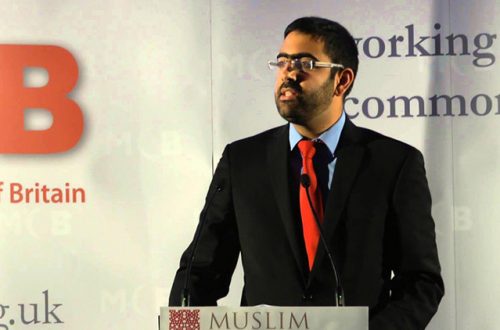Pamela Geller is at it again. Her latest ad campaign features three posters, all targeting Islam (and Muslims) in different ways.
One focuses on antisemitism.
The relationship between Islam and antisemitism, the links between Hitler and the Grand Mufti, the high levels of antisemitism in Muslim countries today – these are all legitimate topics for discussion. But Geller’s over the top rhetoric and call for a blanket punishment of all Muslim countries are ill-judged, to put it mildly. The poster could have an inflammatory effect on those already fully signed up to the SIOA agenda, but would almost certainly alienate most Muslims, whatever their stance on antisemitism. (According to this poll only 7% of US Muslims view Jews unfavourably. That seems very low, but, even if over-favourable, clearly the picture is different from in MENA countries.) Also – and this is a perennial problem with counterjihadists – their approach seems almost deliberately calculated to revolt non-Muslim liberals, perhaps encouraging them to be suspicious in future even of legitimate criticisms of non-violent extremism. And on that note – it is very difficult to see how any sincere or serious critic of extremism can identify Maajid Nawaz of all people as a foe.
The campaign seems designed to cause suspicion of all Muslims.
This poster conflates together Hamas, ISIS, Al-Qaeda, Boko Haram and CAIR. There are certainly legitimate criticisms to be made of CAIR, and not all American Muslims think it represents them – but it isn’t reasonable to align it with ISIS. This kind of bludgeoning and disproportionate criticism polarises debate. As well as alienating liberal, secular Muslims (for whom Jihad really is a spiritual rather than a violent struggle) Geller’s scattergun approach makes it easier, not harder, for non-violent extremists to evade criticism – for they can easily demonstrate that they are firmly opposed to ISIS, even though some of their goals may still be chilling.
This is possibly the most troubling poster.
It’s quite true that many extremists used to lead very secular lifestyles. But the poster’s purpose seems to be to inspire distrust of even the most secular and CAIR-averse Muslim – while implying that any Muslim who identifies as devout wants to cut your head off.
If the posters don’t infringe the MTA guidelines or US law then they should be allowed to stand, nasty though they are. This situation is therefore quite different from that I described in an earlier post – in that instance the Massachusets Bay Transport Authority (MBTA) was acting in accordance with its own guidelines in rejecting a comparable campaign. Context is an important factor within discussions of free speech. It is perfectly reasonable for publications or social media platforms to set certain transparent and consistent community standards. Just because you don’t have the right to get published everywhere doesn’t mean that your free speech is being eroded. With that point in mind I’d be interested to know if readers believe any of the cases of censorship documented here by Index on Censorship do not raise serious free speech concerns. For example, I would imagine that many here would agree with the decision to revoke the hiring of Steven Salaita. How does his case compare with that of Jonathan Matusitz? If we think Salaita did cross a line, does that mean that CAL Berkeley is reasonable to insist that absolute free speech on campus should be subordinated to civility and respect?





